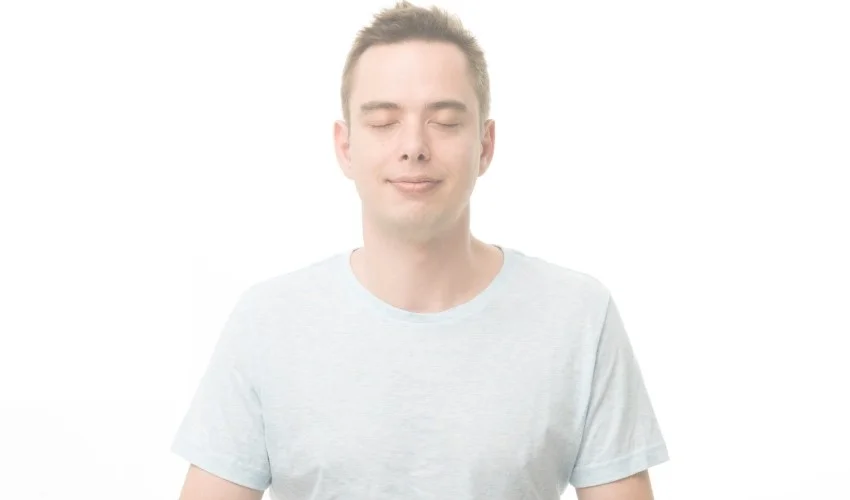Living with type 2 diabetes can be challenging and stressful. The constant need to monitor blood sugar levels, adhere to dietary restrictions, manage medications, and make lifestyle adjustments can take a toll on one’s emotional well-being. Stress, in particular, can have a significant impact on blood glucose control and overall health. However, by incorporating effective stress reduction techniques into their daily routine, individuals with type 2 diabetes can improve their emotional well-being, enhance diabetes management, and promote overall health. In this article, we will explore various techniques for stress reduction and relaxation, such as deep breathing and meditation, and discuss their potential benefits for type 2 diabetic patients and their caregivers.
Understanding Stress and Its Impact on Type 2 Diabetes
Living with type 2 diabetes often comes with additional stressors. The relationship between stress and blood glucose levels is complex. When stressed, the body releases stress hormones such as cortisol, which can cause blood sugar levels to rise. Additionally, stress can lead to unhealthy coping mechanisms like emotional eating or neglecting self-care, which can further impact blood glucose control. Over time, chronic stress can result in poor glycemic control, increased insulin resistance, and an elevated risk of developing complications. For more insights, explore strategies for overcoming fear of diabetes. Over time, chronic stress can result in poor glycemic control, increased insulin resistance, and an elevated risk of developing complications. To evaluate your risk of developing complications, you can use a Diabetes Risk Assessment Tool. Therefore, it is crucial to address stress and incorporate effective stress reduction techniques into diabetes management plans.
Deep Breathing Techniques for Stress Reduction
Explanation of deep breathing and its benefits
Deep breathing is a simple yet powerful technique that can help alleviate stress and promote relaxation. It involves consciously taking slow, deep breaths, engaging the diaphragm, and focusing on the breath. Deep breathing can activate the body’s relaxation response, reducing the production of stress hormones and promoting a sense of calmness.
Deep breathing techniques, such as diaphragmatic breathing and alternate nostril breathing, are particularly effective for stress reduction. Diaphragmatic breathing involves breathing deeply into the abdomen rather than shallowly into the chest. This technique helps activate the body’s relaxation response and can be practiced anytime, anywhere. Alternate nostril breathing is a technique rooted in yoga and involves breathing in through one nostril while closing the other, then exhaling through the opposite nostril. This technique helps balance the body’s energy and promote relaxation.
Diaphragmatic breathing technique: step-by-step guide
Find a comfortable and quiet place to sit or lie down.
- Place one hand on your chest and the other on your abdomen.
- Inhale slowly through your nose, allowing your abdomen to rise while keeping your chest relatively still.
- Exhale slowly through your mouth, letting your abdomen fall.
- Repeat this deep breathing pattern for several minutes, focusing on the sensation of the breath.
Alternate nostril breathing technique: step-by-step guide
- Sit comfortably with your spine straight.
- Close your right nostril with your right thumb and inhale deeply through your left nostril.
- Close your left nostril with your right ring finger, release your thumb, and exhale through your right nostril.
- Inhale through your right nostril, close it with your thumb, release your ring finger, and exhale through your left nostril.
- Continue this alternating pattern for several minutes, maintaining slow and controlled breaths.
Incorporating deep breathing into daily routines
Deep breathing can be practiced anytime and anywhere, making it an accessible tool for stress reduction. Consider incorporating deep breathing into your daily routine, such as taking a few moments of deep breathing before meals, before bedtime, or during breaks throughout the day. Consistent practice can enhance its effectiveness in managing stress.
Meditation for Stress Relief and Diabetes Management
Overview of meditation and its positive impact on stress
Meditation is a practice that involves training the mind to achieve a state of focused attention and mental clarity. It can help reduce stress, enhance self-awareness, and promote emotional well-being. Regular meditation practice has been associated with improved stress management and diabetes control.
Meditation can take different forms, such as mindfulness meditation and loving-kindness meditation. Mindfulness meditation involves bringing one’s attention to the present moment, focusing on the breath or a specific object of attention. This practice cultivates a non-judgmental awareness of thoughts and emotions. Loving-kindness meditation involves directing well-wishes and compassion towards oneself and others, promoting feelings of love and goodwill.
Mindfulness meditation: step-by-step guide
- Find a quiet and comfortable place to sit.
- Close your eyes and bring your attention to the present moment.
- Focus on your breath or choose a specific object of attention, such as a word or sensation.
- When your mind wanders, gently bring your focus back to your breath or chosen object.
- Start with a few minutes of practice and gradually increase the duration over time.
Loving-kindness meditation: step-by-step guide
- Sit comfortably and bring to mind someone you care about deeply.
- Repeat phrases such as “May you be happy. May you be healthy. May you be safe. May you live with ease.”
- Extend these phrases to yourself, loved ones, neutral individuals, and even difficult individuals.
- Cultivate feelings of compassion, love, and goodwill as you repeat the phrases.
Guided meditation apps and resources
There are various smartphone apps and online resources available that offer guided meditation sessions tailored to stress reduction, relaxation, and diabetes management. Some popular options include Headspace, Calm, Insight Timer, and the free resources provided by the American Diabetes Association.
Additional Stress Reduction Strategies
Physical activity and its stress-relieving effects
Engaging in regular physical activity can be an effective stress management strategy. Exercise helps release endorphins, the body’s natural mood elevators, and promotes a sense of well-being. Aim for at least 150 minutes of moderate-intensity aerobic exercise per week, such as brisk walking, swimming, or cycling.
Expressive writing as a therapeutic tool
Expressive writing, such as keeping a journal or writing about stressful experiences, has shown promise in reducing stress and improving emotional well-being. Take a few minutes each day to write about your thoughts, feelings, and experiences related to living with type 2 diabetes. This practice can help gain clarity, process emotions, and reduce stress.
Social support and its importance in stress reduction
Seeking support from family, friends, or support groups can provide emotional support and a sense of belonging. Sharing experiences, concerns, and successes with others who understand can help alleviate stress and provide practical tips for diabetes management. Consider joining local support groups or online communities dedicated to diabetes.
Time management and prioritization for stress reduction
Effective time management can reduce feelings of overwhelm and stress. Prioritize tasks, delegate responsibilities when possible, and break larger goals into smaller, manageable steps. Establishing a routine and maintaining a balance between diabetes management, work, personal life, and relaxation can contribute to stress reduction.
Integrating Stress Reduction Techniques into Daily Life
Creating a stress reduction plan
Develop a personalized stress reduction plan that includes techniques like deep breathing, meditation, physical activity, and other strategies discussed. Set realistic goals, allocate time for stress reduction activities, and track your progress.
Setting realistic goals for stress reduction
Start with small and achievable goals to build momentum and gradually increase the duration and frequency of stress reduction practices. It’s essential to be patient and flexible with yourself while establishing a routine that works for you.
Incorporating techniques into daily routines and self-care practices
Integrate stress reduction techniques into your daily routines. For example, practice deep breathing or meditation while taking breaks, during meal preparation, or before bedtime. Make self-care a priority by setting aside dedicated time for relaxation and stress reduction activities.
Benefits of Stress Reduction and Relaxation Techniques in Diabetes Management
Improved blood glucose control and glycemic variability: Effective stress reduction techniques can help regulate blood sugar levels and reduce glycemic variability, contributing to better diabetes management.
Enhanced emotional well-being and reduced risk of depression: Managing stress can improve overall emotional well-being, reduce anxiety, and decrease the risk of developing depression.
Better medication adherence and self-management practices: By reducing stress, individuals are more likely to adhere to their medication regimen, monitor their blood sugar levels consistently, and engage in healthy self-management practices.
Potential reduction in diabetes-related complications: Chronic stress can contribute to the development of diabetes-related complications. By effectively managing stress, individuals may lower their risk of complications such as cardiovascular disease, nerve damage, and kidney problems.
Incorporating stress reduction and relaxation techniques into the management of type 2 diabetes can have numerous benefits for individuals and their caregivers. Techniques such as deep breathing, meditation, physical activity, and social support can help alleviate stress, improve blood glucose control, enhance emotional well-being, and reduce the risk of complications. By creating a personalized stress reduction plan and integrating these techniques into daily routines, individuals can take proactive steps towards achieving a healthier and more balanced life with type 2 diabetes.




